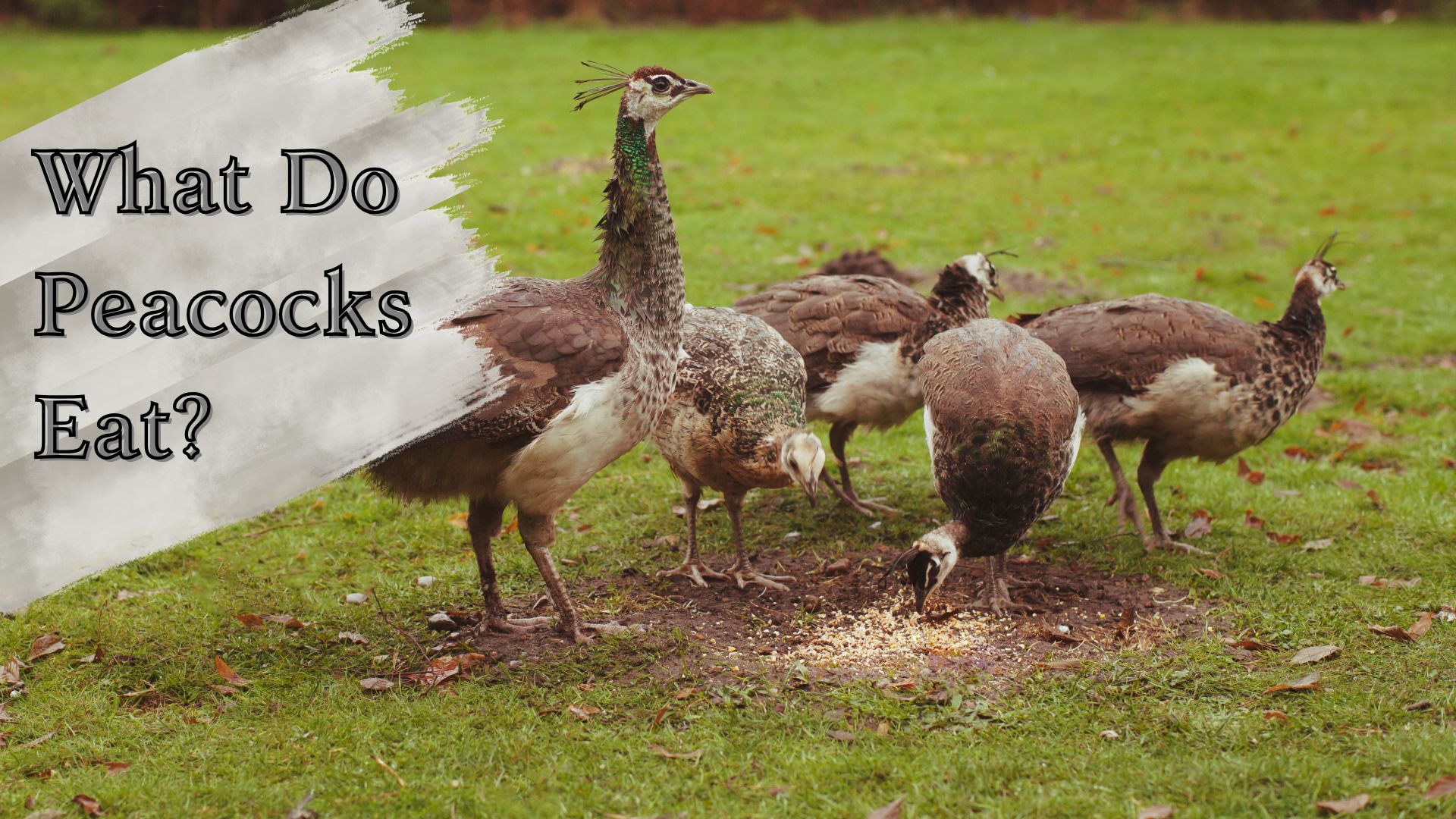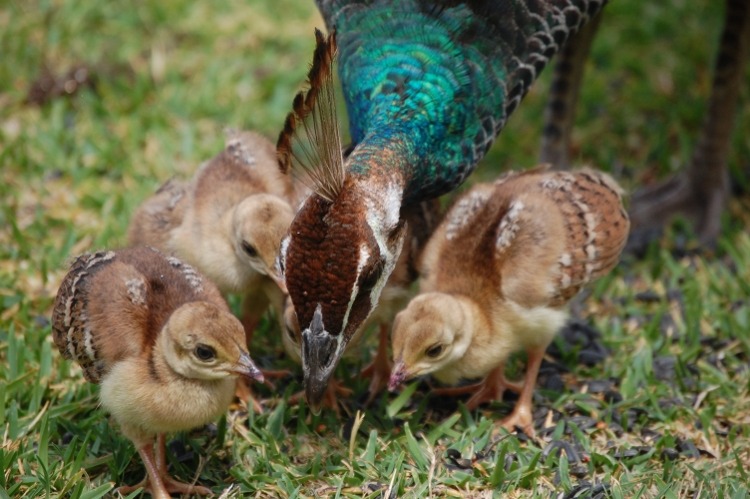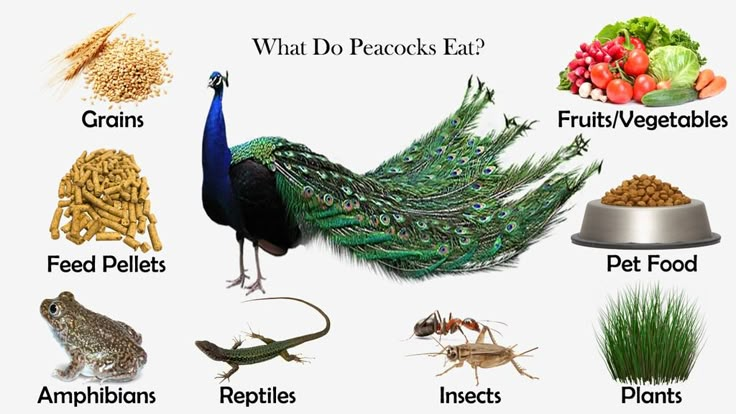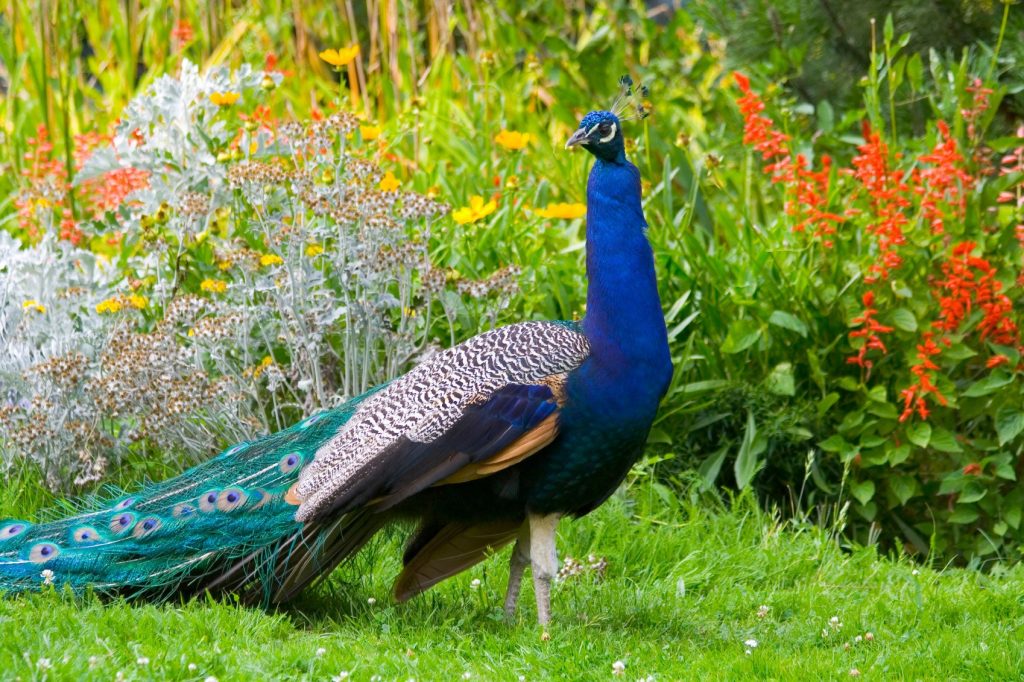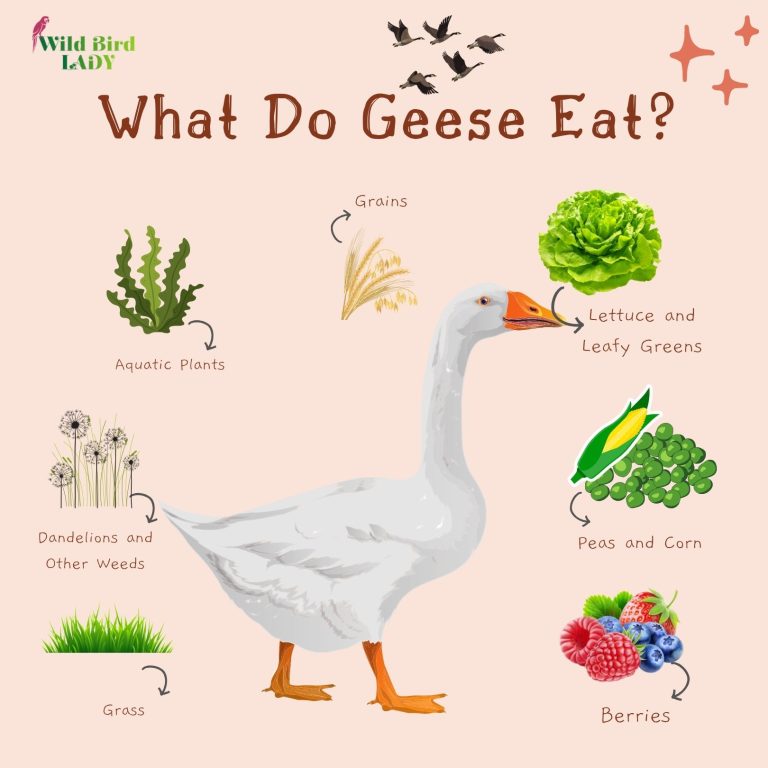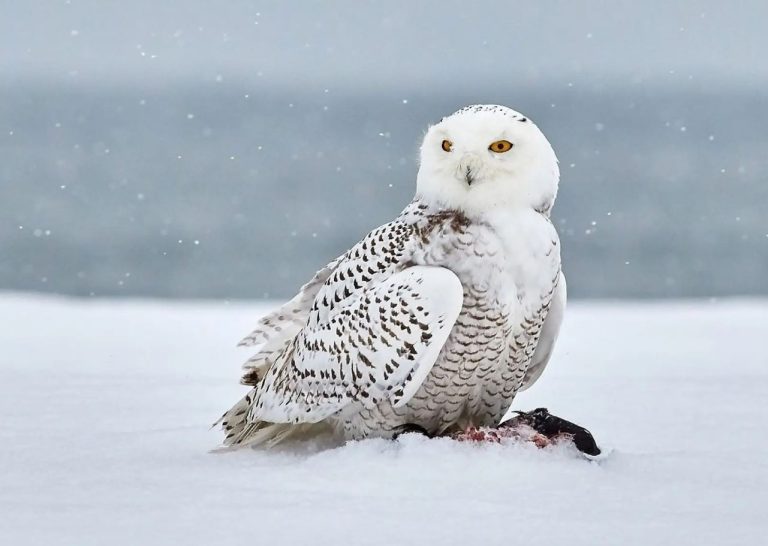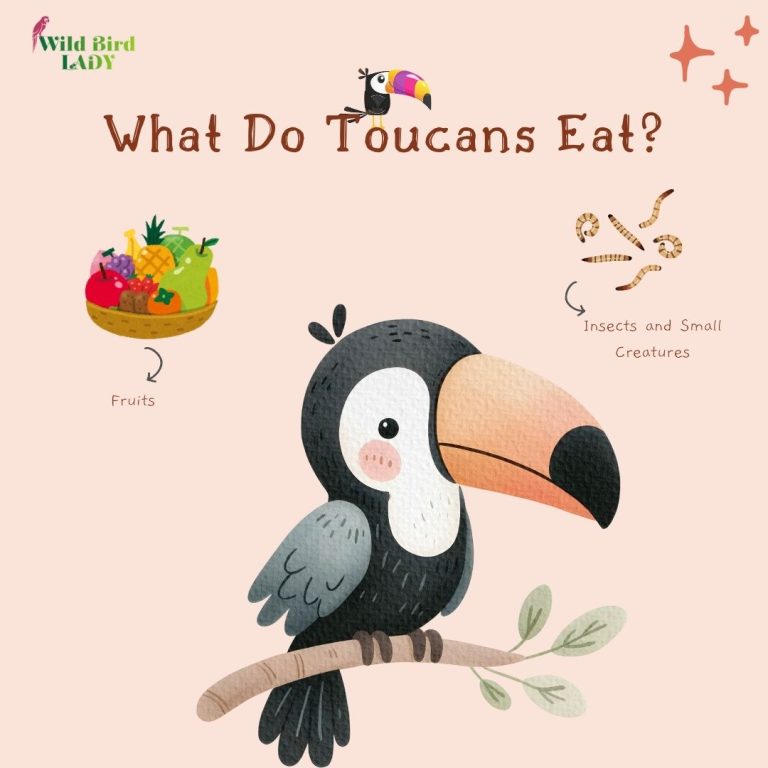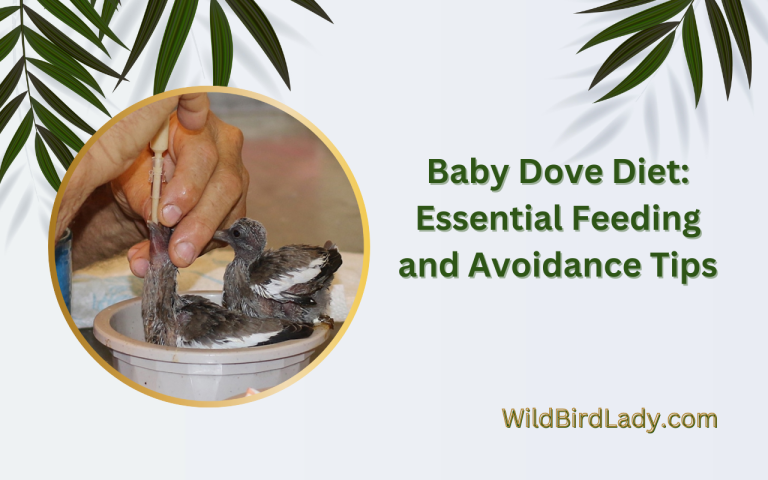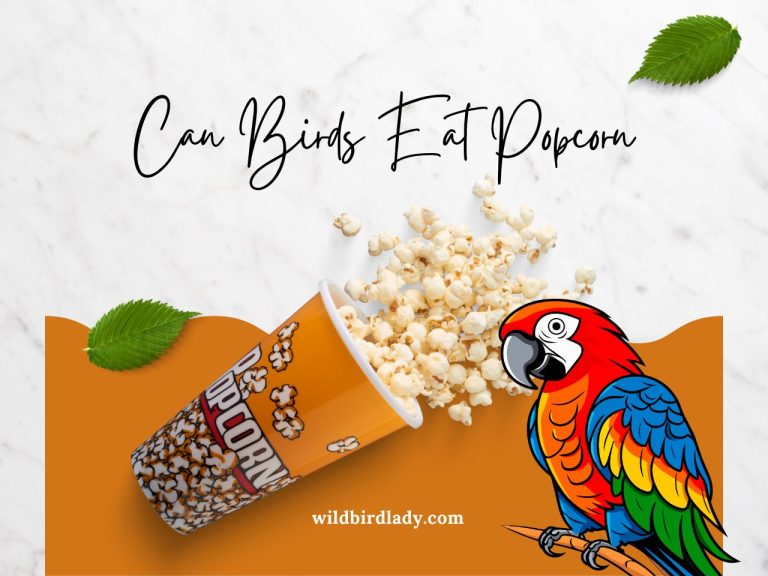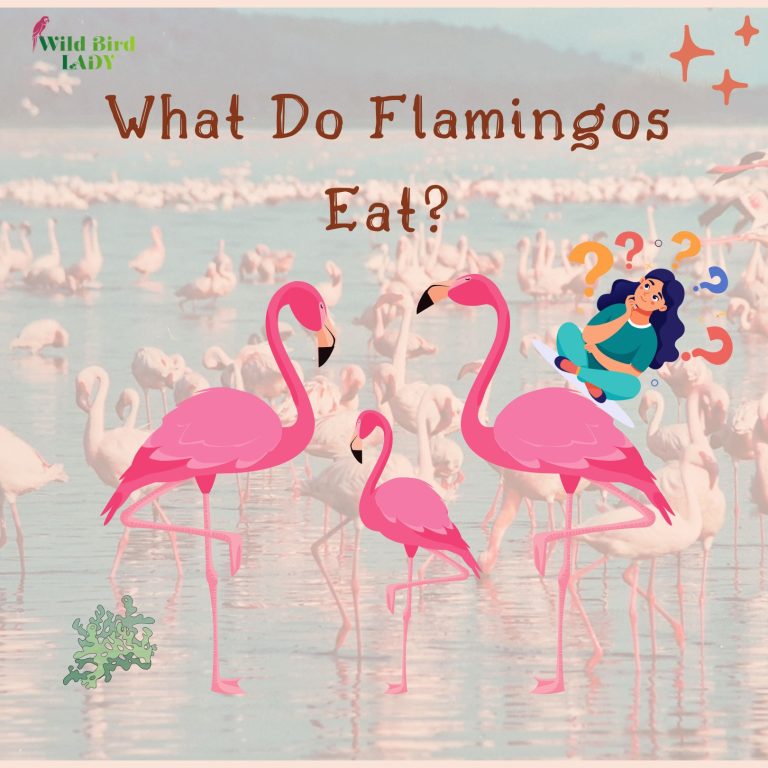What Do Peacocks Eat? Everything You Need to Know
As someone who has spent over 13 years observing birds in the wild and in captivity, few sights are as mesmerizing to me as a peacock fanning its iridescent tail in full display. But beyond their captivating beauty, there’s something just as intriguing—the peacock diet.
In this guide, I’ll walk you through exactly what peacocks eat, how their diet differs in the wild vs. captivity, what you should never feed them, and how nutrition affects their health, colors, and lifespan. Whether you’re a curious bird lover or someone raising peafowl, this is everything you need to know about peacock food.
Natural Diet: What Do Peacocks Eat in the Wild?
In their native habitats—India, Sri Lanka, Myanmar, and parts of Africa—peacocks are omnivores, meaning they consume both plants and animals.
According to All About Birds, wild peacocks eat a surprisingly diverse menu:
- Grains and seeds – millet, corn, wheat, and wild grasses
- Berries and fruit – figs, guavas, mangoes, and berries
- Insects – ants, termites, grasshoppers, beetles
- Small reptiles and amphibians – like lizards, frogs, and even small snakes
- Plants and leaves – tender shoots, young leaves, and flowers
This omnivorous diet is essential for their survival and helps maintain their immune systems and vibrant plumage.
“Peafowl are highly opportunistic feeders and will consume a wide range of foods depending on availability,” – All About Birds
Captive Diet: What Do Domesticated Peacocks Eat?
In captivity, peacock food should mimic the variety of their wild diet as much as possible. Over the years, I’ve helped many birdkeepers develop healthy feeding routines for their flocks. Here’s what I typically recommend:
✅ Balanced Daily Diet for Adult Peacocks:
- Game bird pellets or crumbles (18-22% protein)
- Whole grains: cracked corn, wheat, oats, millet
- Fresh greens: kale, spinach, lettuce, dandelion leaves
- Fruits (in moderation): grapes, apples (no seeds), melon, berries
- Vegetables: peas, carrots, cucumbers, pumpkin
- Occasional protein: mealworms, boiled eggs, cooked beans
Peacocks also appreciate treats like sunflower seeds or raisins, but these should be offered sparingly.
🛑 Avoid These Common Mistakes:
- Overfeeding with corn (can cause obesity)
- Feeding only grains (leads to deficiencies)
- Lack of access to grit (impairs digestion)
A good peacock diet in captivity isn’t just about variety—it’s about balance.
The Role of Nutrition in Peacock Health
Peacocks aren’t just ornamental birds with flashy feathers—they’re also large, active creatures with complex dietary needs. Over my 13+ years of observing and caring for peafowl, I’ve learned that one of the biggest factors in a peacock’s overall well-being is its diet. What a peacock eats has a direct impact on its energy levels, immune strength, fertility, and especially its plumage.
A poor peacock diet isn’t just a minor issue—it can have serious consequences. Birds fed an unbalanced or low-quality diet often develop:
- Dull or uneven feather coloration
- Weakened immune systems, making them prone to infections and parasites
- Reduced fertility and lower hatch rates
- Slow growth or bone deformities in young peachicks
- Lethargy and poor appetite, which worsens other health problems
On the other hand, a nutritionally rich and balanced diet results in visibly healthier, more vibrant birds.
Nutrients That Matter Most
To support strong bones, beautiful feathers, and a robust immune system, peacocks need a daily intake of specific nutrients:
- Vitamin A: Essential for eye health, skin, and respiratory tissue. Deficiency can cause breathing issues and weak feather shafts.
- Vitamin D3: Helps absorb calcium and supports bone growth, especially in chicks. Birds without sunlight access need D3 supplements.
- Vitamin E: A powerful antioxidant that boosts fertility and prevents neurological issues.
- Calcium: Crucial for strong bones, eggshell formation, and muscle function.
- Amino acids (like methionine and lysine): The building blocks of protein—important for feather production, growth, and tissue repair.
I’ve personally witnessed dramatic transformations in birds once their nutrition was corrected. Peacocks that once had pale, patchy plumage began regrowing rich, iridescent feathers. Fertility increased, and even temperament improved. It truly proved the saying: “You are what you eat”—and that absolutely applies to peacocks.
Whether you’re feeding wild visitors or managing a captive flock, investing in proper peacock food pays off. A healthy bird is not only beautiful but also active, fertile, and far less likely to fall ill.
If you’re unsure whether your peacock’s diet is up to par, start by reviewing the basics—are they getting enough vitamins, minerals, and protein? Are you rotating their foods with the seasons? Often, just a few simple dietary changes can make a world of difference.
Foods You Should Never Feed Peacocks
Some foods are downright dangerous for peacocks. Here’s a list of items to keep far from their reach:
❌ Toxic or Harmful Foods:
- Avocado – contains persin, toxic to birds
- Chocolate and caffeine – highly toxic
- Onions and garlic – can damage red blood cells
- Salty snacks – cause kidney damage
- Moldy or spoiled food – leads to fatal infections
- Bread and junk food – offers no nutritional value
Remember, peacock food should always be fresh, clean, and species-appropriate.
How Peacocks Forage in Nature
Wild peacocks are active foragers. They roam large territories, pecking at the ground for seeds, bugs, and edible plants.
Here’s what makes their foraging so effective:
- Keen eyesight: They can spot insects from a distance.
- Strong beaks: Perfect for digging into soil or cracking seeds.
- Instinctual knowledge: They naturally avoid most toxic plants.
If you’re keeping peafowl, allow them to free-range safely. Not only does it mimic their natural behavior, but it also keeps them physically active and mentally stimulated.
Seasonal Variations in the Peacock Diet
Like many wild birds, peacocks naturally adjust their diet with the seasons, responding to changes in temperature, food availability, and their own biological needs. As someone who has studied peafowl behavior across different climates and settings, I’ve observed how crucial it is to mirror these seasonal dietary shifts—especially in captivity—if we want to keep them healthy, active, and vibrant year-round.
Spring and Summer: Fueling Breeding and Molting
The warmer months—spring and early summer—are the most active time of year for peacocks. It’s the breeding season, and males put tremendous energy into growing and displaying their iconic tail feathers to attract females. Molting may follow shortly after, requiring even more nutritional support.
To meet these seasonal demands, wild and free-ranging peacocks tend to seek out foods rich in protein, moisture, and nutrients. Their diet typically includes:
- Insects and invertebrates: beetles, termites, ants, grasshoppers, and mealworms
- Tender green plants and fresh shoots: full of vitamins and hydration
- Fruits and berries: such as figs, wild grapes, and mangoes
- Snails, lizards, or frogs: occasional sources of extra protein and minerals
If you’re raising peafowl in captivity, this is the time to increase protein-rich feed and offer a broader range of fruits, leafy greens, and even safe live treats like mealworms or black soldier fly larvae. It helps support:
- Feather regeneration during molting
- Egg production and chick development in females
- Muscle and tail feather growth in males
“Feeding a high-protein diet during the breeding season is vital to maintain feather quality and reproductive health in peafowl.” — All About Birds
Fall and Winter: Energy and Warmth for Survival
As temperatures drop and natural food becomes scarce, peacocks shift their focus from reproduction to survival. Their metabolism slows slightly, but they still need high-energy foods to maintain body warmth and fat reserves—especially in colder climates.
Typical fall and winter peacock food includes:
- Whole grains: cracked corn, wheat, oats, and millet
- High-fat seeds: black oil sunflower seeds, safflower
- Legumes and beans: cooked lentils or peas provide protein and fiber
- Root vegetables: like carrots, sweet potatoes, and squash (cooked or grated raw)
Water becomes even more important during winter months. In areas where natural water freezes, I always recommend heated bird waterers to prevent dehydration.
In captivity, this is the time to reduce moist fruits slightly, avoid excessive raw greens (which can cool the body), and focus on calorie-dense foods to help peacocks generate internal heat and maintain healthy weight.
Why Seasonal Adjustments Matter
Failing to align the peacock diet with seasonal needs can lead to serious issues:
- Low protein in spring can result in poor feather growth or egg failure
- Excessive fruit in winter can cause diarrhea or cold stress
- Insufficient calories during winter may weaken immune systems
I always advise keepers to observe their birds closely. Are they more active? Molting? Losing weight in cold weather? These are signs it’s time to adjust their food intake.
By tuning into the natural rhythms of the seasons, you not only ensure your peacocks stay healthy, but you also help them thrive in a way that mimics their wild instincts.
Peachicks’ Diet: What Baby Peacocks Eat
Raising baby peacocks (called peachicks) requires extra care in feeding.
First 6 Weeks:
- High-protein chick starter feed (24-28% protein)
- Boiled eggs (mashed and mixed into feed)
- Chopped greens (gradually introduced after week 2)
6 Weeks to 3 Months:
- Transition to game bird grower feed
- Introduce fruits and vegetables
- Begin offering small insects like mealworms
Ensure access to clean water and grit at all times. Never feed them large seeds or hard foods early on—they can choke or develop crop issues.
Supplements for Optimal Health
Even with a solid base diet, peacocks sometimes need supplements:
- Grit and oyster shell: Essential for digestion and calcium
- Vitamin D3: Especially for indoor birds or those in low sunlight areas
- Probiotics: For gut health and better nutrient absorption
- Electrolyte solution: During extreme heat or stress
A well-fed peacock is an energetic, long-lived, and visually stunning bird. Don’t skip on quality when it comes to peacock food.
Frequently Asked Questions
Q1: Can peacocks eat dog or cat food?
Answer: In small amounts, yes—especially high-protein dry kibble. But it should never replace their main diet.
Q2: Is rice safe for peacocks?
Answer: Yes. Cooked rice (preferably brown or wild) can be a good occasional energy source. Avoid salty or seasoned rice.
Q3: How often should I feed peacocks?
Answer: Twice a day is ideal—once in the morning, once in the evening. Free-range birds may supplement their own diet in between.
Q4: Do peacocks need access to water?
Answer: Absolutely. Fresh, clean water should be available 24/7. It’s essential for digestion, cooling, and overall health.
Final Thoughts
So, what do peacocks eat? As you’ve seen, their diet is impressively diverse—ranging from grains and greens to insects and fruits. Whether in the wild or in your backyard, peacocks thrive on variety, balance, and good care.
As a lifelong birder, I’ve learned that the secret to raising healthy peafowl isn’t just in feeding them—it’s in understanding them. And when you feed them right, you’ll be rewarded with not just stunning plumage, but happy, active birds that can live up to 20 years or more.
Ready to feed your peacocks like a pro?
Start with a balanced mix, provide fresh water daily, and let them forage when possible. Your flock—and their feathers—will thank you.
Read also: Can Peacocks Fly? What Every Bird Lover Should Know

